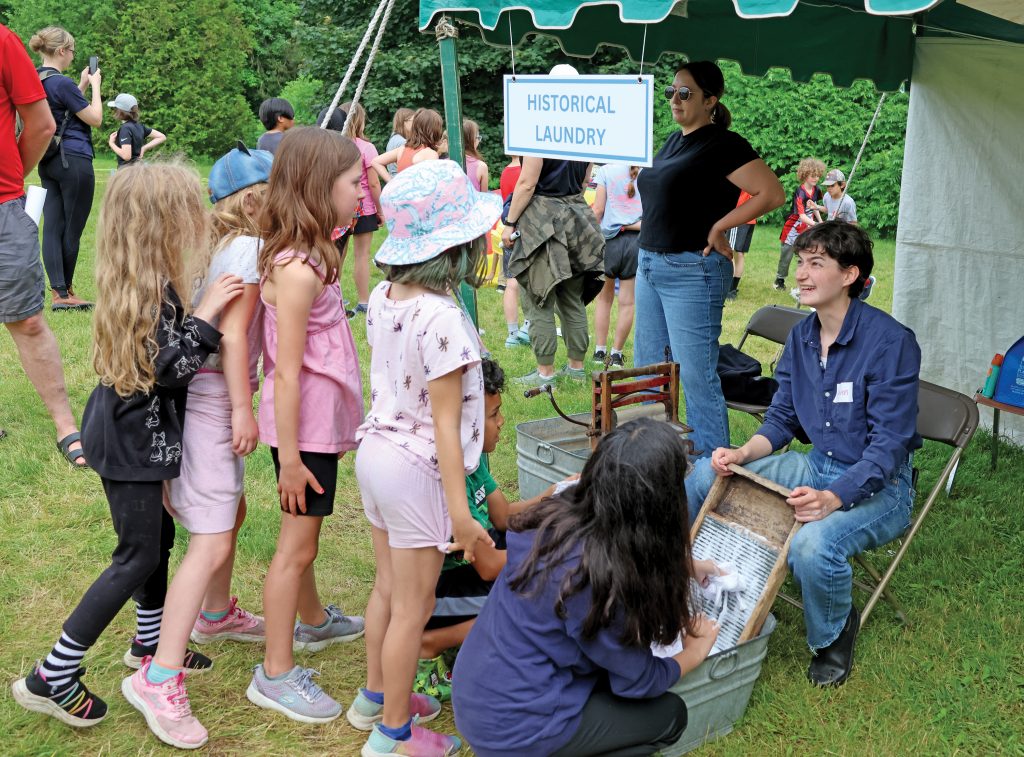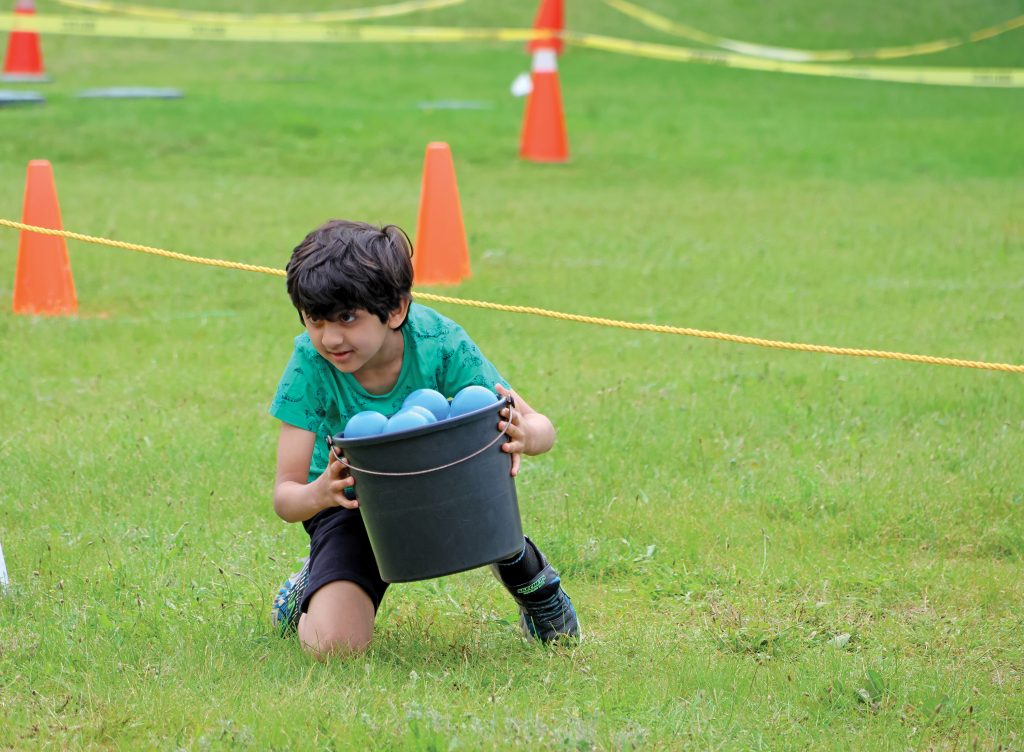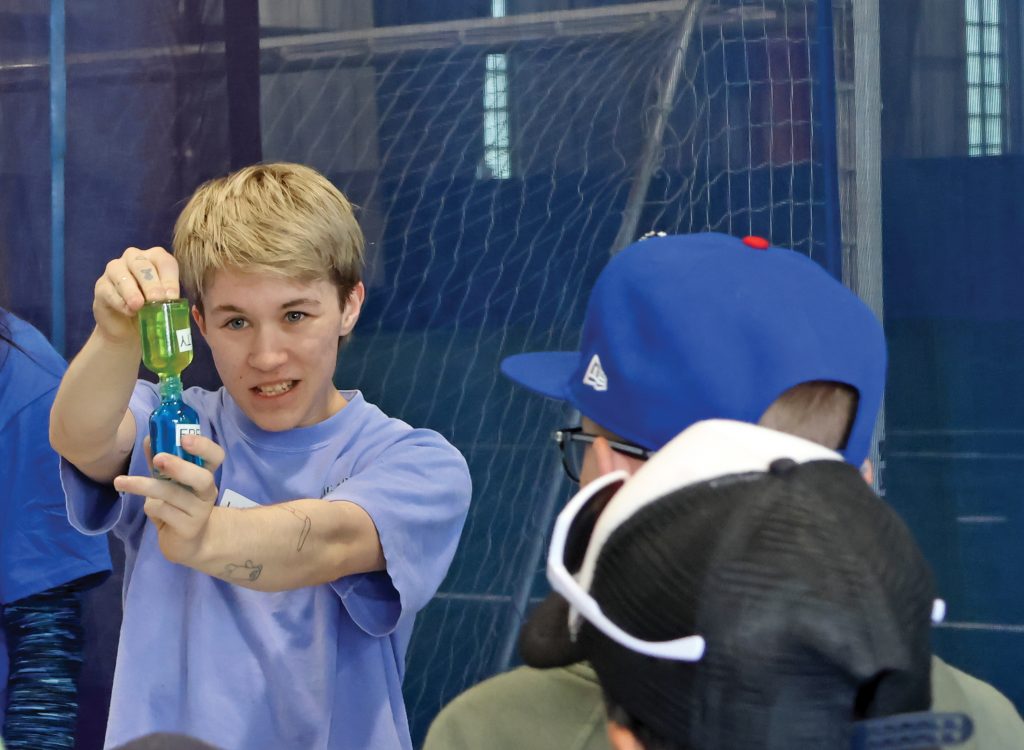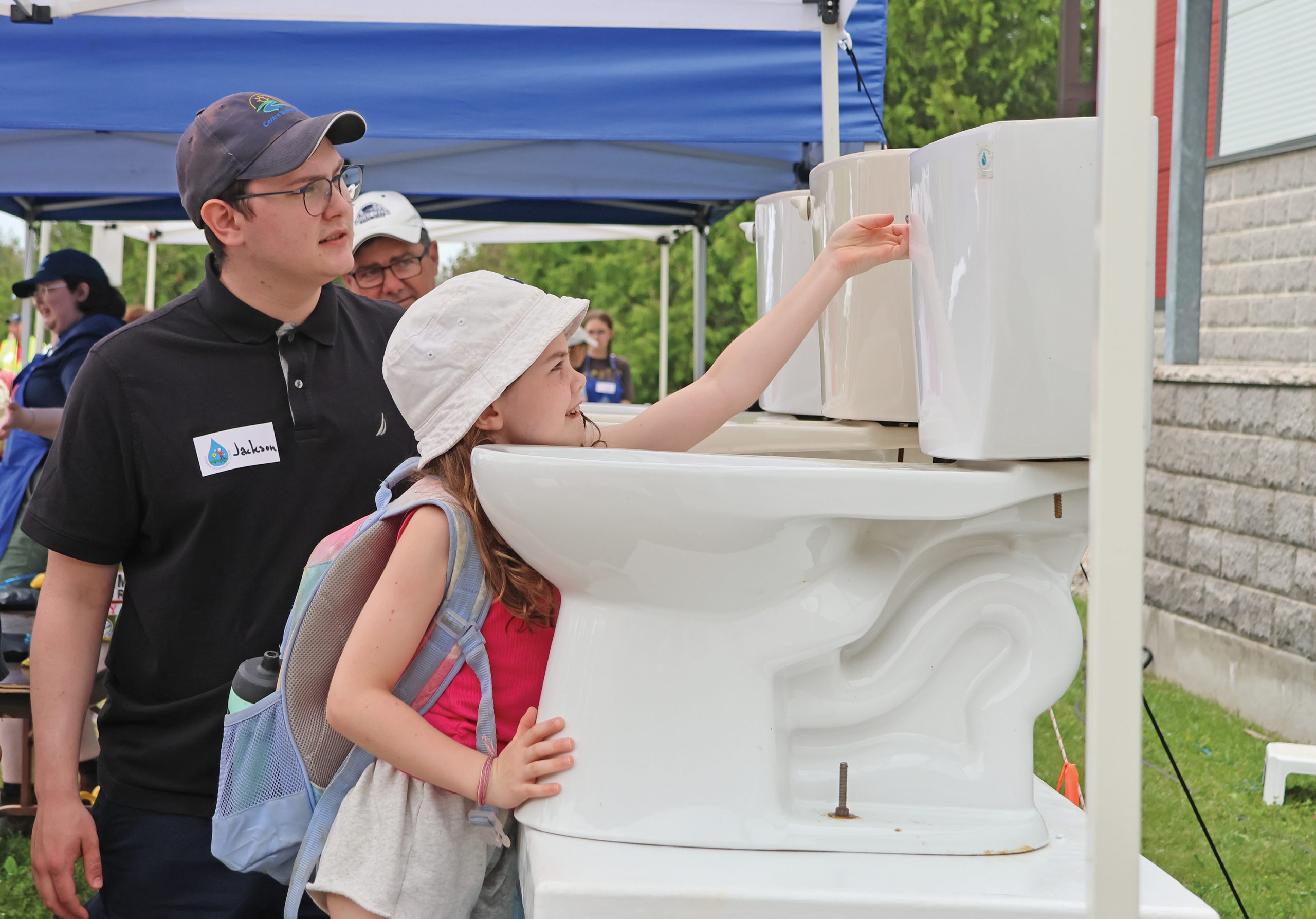MARDEN – How much water does the average toilet use? What prevents dog pee from ending up in wells? Which is heavier, fresh or salt water? How does water travel (across the land or into the ground)?
Children had all their water-related questions answered at the recent Waterloo Wellington Children’s Goundwater Festival.
“It’s basically educating the next water stewards … making sure these kids understand the value of water and how to conserve it,” said executive director Beatriz Gomez.
This year’s festival took place May 31 to June 6 at Marden Park in Guelph/Eramosa Township, welcoming more than 5,000 students in Grades 2 to 5 over the course of the week.
They had the chance to check out more than 50 activity centres, set up mainly in the outdoor space surrounding the Royal Distributing Athletic Performance Centre.
“We encourage them to just wander and find a place where they aren’t having to line up,” festival board member Mike Van Huisseling told a group of people from the public and private sectors attending a “VIP tour” of the festival on June 5.
Small groups of students, teachers and parent volunteers gathered around stations with names like “Royal Flush,” “Septic Sights,” “Watering Hole,” “Up on the Watershed,” and “Historic Laundry.”
Most had some form of interactive component.

Tarra Keith, left, and Raven Griffin, of Wellington County Museum and Archives, show a group of school children what it was like to do laundry before automated machines.
At the Wellington County Museum and Archives’ Historic Laundry booth, kids got a little sudsy scrubbing garments on a washboard, before putting them through an old-fashioned ringer.
At the “Watering Hole,” kids raced relay-style to collect buckets of balls representing water and carry them back to where they started.
It was an activity meant to illustrate how children in some parts of the world must fetch their water – though the racing component undoubtably made the simulated activity more fun than the real thing.
At one station, students learned about how wells are drilled and constructed, and at another, they got to try their hand at finding underground utility pipes.
Many of the organizations taking part in the event brought their own displays, but some things were already on site.

Sir Isaac Brock Grade-2 student Aahir Budhwani carries his bucket under an obstacle at the Watering Hole activity station.
“One of the benefits of this site is they have a small-scale water treatment facility here,” Van Huisseling told VIP guests, explaining it gives kids a chance to learn about a septic system and leaching bed.
The property also has a well, which formed the basis of one of the stations.
This is the first year the festival was held at the Marden location, and Gomez said it worked out well.
The festival has been around in some form since 1994, but a few years after its founding it split into smaller regional festivals, she said.
“We are still one of the largest, because we include Waterloo, Wellington and Guelph,” said Gomez.
Previous events were hosted at the Ken Seiling Waterloo Region Museum in Kitchener, but construction forced the festival to look for new locations.
“We panicked in the beginning,” but it worked out well when the festival was able to find new locations that suited just as well, Gomez said.
Last year’s event, which marked a return to an in-person festival following the pandemic, took place at Guelph Lake Conservation Area.
For classes that attend the festival, the cost is $12 per student.
“The fee covers about 30 per cent of the cost,” she said. “The rest is all subsidized by our donors.”

Volunteer Lane Pawczuk demonstrates the relative density of salt water and fresh water at an activity station set up in the Royal Distributing Athletic Performance Centre during the Waterloo Wellington Children’s Groundwater Festival on June 5. Children learned that salt water is heavier.
More than 150 volunteers are on site daily, and there are 23 partner organizations without which the event could not happen, Gomez said. They include local municipalities, the Grand River Conservation Authority, private businesses and more.
Many of them not only provide financial support, they also take part.
“I think we all share the same vision and mission,” said Gomez. “It’s easy to convince them to participate when it’s part of their mandate.”
Educating and inspiring the next generation to be environmentally conscious, particularly when it comes to water, is a goal of the festival.
It seems to be working.
“We’re starting to get volunteers from high school that attended as school kids,” Van Huisseling said.
“They’re often going into environmental science and conservation.”




